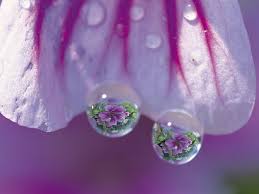Backgrounds Wallpaper Biography
Delhi is the largest metropolis by area and the second-largest metropolis by population in India. It is the eighth largest metropolis in the world by population with 16.7 million inhabitants in the Territory as of the 2011 Census. The region has been given special status of National Capital Region under The Constitution (69th Amendment) Act, 1991. There are nearly 22.2 million residents in the greater National Capital Region urban area (which also includes the cities Noida, Greater Noida, Ghaziabad, Gurgaon,Sonepat and Faridabad along with other smaller nearby towns).Delhi is known to have been continuously inhabited since at least the 6th century BC, though human habitation is believed to have existed since between the third and second millennia BC. Through most period of its history, Delhi has served as capital of kingdoms and empires. It has been invaded, ransacked and rebuilt several times, particularly during the Medieval era, and therefore today's city of Delhi is a cluster of many capital cities scattered across the city's dimensions. Delhi is also widely believed to have been the site of Indraprastha, the legendary capital of the Pandavas during the times of the Mahabharata. Delhi re-emerged as a major political, cultural and commercial city along the trade routes between northwest India and the Gangetic plain after the rise of the Delhi sultanates.It is the site of many ancient and medieval monuments, archaeological sites and remains.
In 1639, Mughal emperor Shahjahan built a new walled city in Delhi which served as the capital of the Mughal Empire from 1649 to 1857. British had captured Delhi by 1803 and George V announced in 1911 that the capital of British controlled parts of India would be Delhi.So a new capital city, New Delhi, was built to the south of the old city during the 1920s. When India gained independence from British rule in 1947, New Delhi was declared its capital and seat of government.
The name Delhi is often also used to include urban areas near the NCT, as well as to refer to New Delhi, the capital of India, which lies within the metropolis. Although technically a federally administered union territory, the political administration of the NCT of Delhi today more closely resembles that of a state of India with its own legislature, high court and an executive council of ministers headed by a Chief Minister. New Delhi, jointly administered by both the federal Government of India and the local Government of Delhi, is also the capital of the NCT of Delhi.
A very common view is that its eponym is Dhillu or Dilu, a king of the Mauryan dynasty, who built the city in 50 BC and named it after himself.The Hindi/Prakrit word dhili (loose) was used by the Tomaras to refer to the city because the Iron Pillar built by Raja Dhava had a weak foundation and was replaced.[16] The coins in circulation in the region under the Tomaras were called dehliwal. Some other historians believe that the name is derived from Dilli, a corruption of dehleez or dehali—both terms meaning 'threshold' or 'gateway'— and symbolic of the city as a gateway to the Gangetic Plain. Another theory suggests that the city's original name was Dhillika.[20] As per Bhavishya Purana, Prithviraj Chauhan, the King of Indraprastha built a new fort for convenience of all four castes, in his kingdom. He ordered to construct a gateway to that Fort and later named the fort the same (dehali). This fort was constructed in Purana Qila area.
The people of Delhi are referred to as Dilliwallahs or Delhiites.








Delhi is the largest metropolis by area and the second-largest metropolis by population in India. It is the eighth largest metropolis in the world by population with 16.7 million inhabitants in the Territory as of the 2011 Census. The region has been given special status of National Capital Region under The Constitution (69th Amendment) Act, 1991. There are nearly 22.2 million residents in the greater National Capital Region urban area (which also includes the cities Noida, Greater Noida, Ghaziabad, Gurgaon,Sonepat and Faridabad along with other smaller nearby towns).Delhi is known to have been continuously inhabited since at least the 6th century BC, though human habitation is believed to have existed since between the third and second millennia BC. Through most period of its history, Delhi has served as capital of kingdoms and empires. It has been invaded, ransacked and rebuilt several times, particularly during the Medieval era, and therefore today's city of Delhi is a cluster of many capital cities scattered across the city's dimensions. Delhi is also widely believed to have been the site of Indraprastha, the legendary capital of the Pandavas during the times of the Mahabharata. Delhi re-emerged as a major political, cultural and commercial city along the trade routes between northwest India and the Gangetic plain after the rise of the Delhi sultanates.It is the site of many ancient and medieval monuments, archaeological sites and remains.
In 1639, Mughal emperor Shahjahan built a new walled city in Delhi which served as the capital of the Mughal Empire from 1649 to 1857. British had captured Delhi by 1803 and George V announced in 1911 that the capital of British controlled parts of India would be Delhi.So a new capital city, New Delhi, was built to the south of the old city during the 1920s. When India gained independence from British rule in 1947, New Delhi was declared its capital and seat of government.
The name Delhi is often also used to include urban areas near the NCT, as well as to refer to New Delhi, the capital of India, which lies within the metropolis. Although technically a federally administered union territory, the political administration of the NCT of Delhi today more closely resembles that of a state of India with its own legislature, high court and an executive council of ministers headed by a Chief Minister. New Delhi, jointly administered by both the federal Government of India and the local Government of Delhi, is also the capital of the NCT of Delhi.
A very common view is that its eponym is Dhillu or Dilu, a king of the Mauryan dynasty, who built the city in 50 BC and named it after himself.The Hindi/Prakrit word dhili (loose) was used by the Tomaras to refer to the city because the Iron Pillar built by Raja Dhava had a weak foundation and was replaced.[16] The coins in circulation in the region under the Tomaras were called dehliwal. Some other historians believe that the name is derived from Dilli, a corruption of dehleez or dehali—both terms meaning 'threshold' or 'gateway'— and symbolic of the city as a gateway to the Gangetic Plain. Another theory suggests that the city's original name was Dhillika.[20] As per Bhavishya Purana, Prithviraj Chauhan, the King of Indraprastha built a new fort for convenience of all four castes, in his kingdom. He ordered to construct a gateway to that Fort and later named the fort the same (dehali). This fort was constructed in Purana Qila area.
The people of Delhi are referred to as Dilliwallahs or Delhiites.
Backgrounds Wallpaper
Backgrounds Wallpaper
Backgrounds Wallpaper
Backgrounds Wallpaper
Backgrounds Wallpaper
Backgrounds Wallpaper
Backgrounds Wallpaper
Backgrounds Wallpaper
Backgrounds Wallpaper
Wallpaper Background Muvee, 3d Graphics And Nature
How To Get Video Backgrounds/Wallpapers On Iphone & Ipod Touch Ios 5.0.1
No comments:
Post a Comment